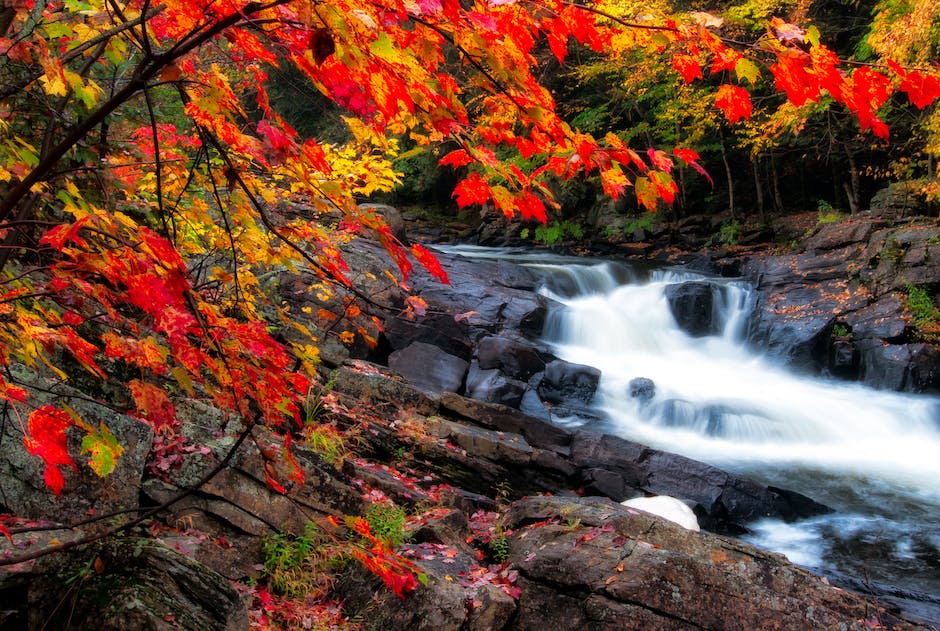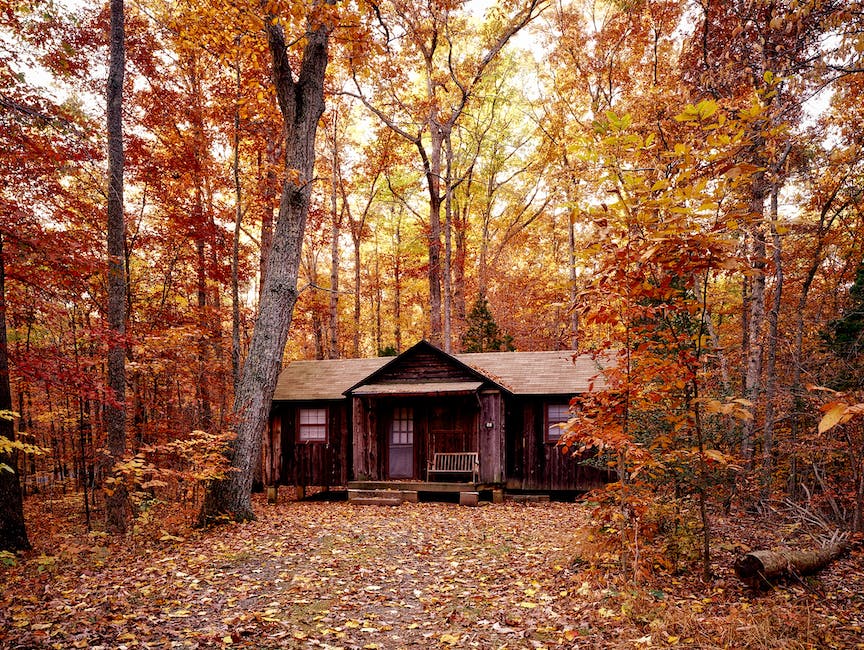All maple trees do not give syrup. There are many different types of maple trees, and only certain types can be used to make syrup. The most common type of maple tree used for syrup is the sugar maple. Other types of maple trees that can be used to make syrup include the black maple, the red maple, and the silver maple.
No, not all maple trees give syrup. Maple syrup is produced from the sap of sugar, red, or black maple trees. These types of maple trees are native to North America. Sap from other maple trees, like the silver or Norway maple, can be used to make syrup, but it will not be as sweet.
Does it hurt a maple tree to tap it for syrup?
While tapping a tree does create a wound, it is a wound from which the tree can readily recover. Commercial syrup producers are able to tap trees for decades without adversely affecting the health of the tree. A vigorous tree will heal, or grow over, a tap hole in one year.
While some people enjoy drinking sap fresh from the tree, it is advisable to boiling it for a brief period to kill any bacteria or yeast. Since it is certainly possible for harmful bacteria to be found in sap, the cautious solution is to pasteurize it before drinking.
Can you get syrup from other trees besides maple
Birch, beech, and other sappy trees can also be tapped to make syrup. David Moore, a syrup producer in New Hampshire, makes syrups from these trees and they are just as sweet as syrup made from sugar maples. Bobby Bascomb, from Living on Earth, visited Moore to taste and learn about these different syrups.
This is the time of year when sap “runs” in maple trees, meaning they can be tapped to draw off the sap and boil down into maple syrup. While sap does flow in tree species other than maples, there are few species that can be tapped to produce an edible food product similar to maple syrup.
How many times can you tap the same maple tree?
Trees between 10 and 20 inches in diameter should have no more than one tap per tree. A second tap may be added to trees between 20 and 25 inches in diameter. Trees over 25 inches in diameter can sustain three taps. No tree should ever have more than three taps.
It takes at least forty years for a maple tree to grow before it is big enough to tap. On a good growing site, and if treated well, a maple tree can be tapped indefinitely. Some of the maple trees we tap were saplings during the Civil War.
Is maple toxic to humans?
Red maples are one of the few trees that are known to be toxic. The toxin in red maples oxidizes hemoglobin with the formation of Heinz bodies, methemoglobinemia and subsequent hemolytic anemia. This can be dangerous for people, especially if they have a blood disorder or are taking certain medications. If you think you may have been exposed to this tree, it is important to seek medical attention immediately.
The rocks were heated in a fire and then placed in the sap containers. The heat from the rocks would cause the sap to boil and the water to evaporate. This process would concentrate the sugars in the sap and make it easier to store.
What happens if you drink maple sap
Maple sap is a good source of oligosaccharides and can be used as a good carbon source for the good bacteria (eg-lactobacilli) in our gut that help us digest our food and strengthen our digestive system.
A new study found that maple sap contains Abscisic Acid (ABA). ABA is a plant hormone that helps plants cope with stress and can also help promote gut health. The researchers believe that ABA in maple sap could help to increase the number of good bacteria in our gut, which would in turn help to improve our digestive health.
Maple syrup is made from the xylem sap of maple trees. It is usually harvested from sugar maple, red maple, or black maple trees, although it can also be made from other maple species. The sap is collected in the spring, when the trees are beginning to bud, and concentrated through evaporation to make syrup.
Can you drink sap from any tree?
Tree sap is not naturally acidic, and the pH of tree sap may be over 50. Canning tree sap or tree water at home is decidedly unsafe.
It’s not just maple syrup anymore! Around the nation, producers are making syrup from the sap of pine, birch, even black walnut trees. This new trend is a delicious way to enjoy the unique flavor of these different kinds of trees.
Do maple trees explode if not tapped
There have been reports of branches exploding on maple trees due to sap pressure build-up. This usually happens in older trees and is more likely to occur in the wrong conditions. If you are concerned about this, you should contact a groundskeeper or tree specialist.
Canadians have been making maple syrup for centuries. The country’s Aboriginal peoples taught the early settlers how to harvest sap and boil it to make maple syrup. Maple syrup has long been part of Canada’s cultural fabric.
How can you tell if a maple tree is tapping?
If you have a u-shaped cleft between your lobes, then your leaf is most likely symmetrical. The shape of the leaf will help to determine the symmetry of the plant. If the leaf is symmetrical, then the plant is likely to be evenly balanced and have a central axis.
At the end of the maple tapping season, there is no need to plug the tap holes with twigs or anything else. Trees know how to heal their wounds all on their own.
What happens if you tap a maple tree too early
If you tap a tree in the spring, it is the equivalent to a human getting a small cut. The tree will scar over to stop the loss of bodily fluids. If you tap too early, the scarring will gradually reduce the flow of sap over the spring.
The sap wood of a tree is the layer of new growth that is between the bark and the heartwood. This is the area where most of the tree’s nutrients are found. In order to tap the tree, you need to drill a hole into the sap wood. The hole should be no more than two inches deep in order to avoid damage to the tree.
How do I identify a maple tree for syrup
Fall is the time to start thinking about making your own maple syrup! To do so, you need to identify which trees in your area are maple trees.
There are three main types of maple trees: the red maple, the sugar maple, and the silver maple.
The red maple leaf has three lobes, saw-tooth edges, and turns red in fall. The sugar maple leaf has five lobes, smooth edges, and turns a variety of colors in fall. The silver maple leaf has five slender lobes, smooth edges, and looks light green (or “silver”) on the underside.
Once you’ve identified which trees are maples, you can start collecting sap in the spring!
You can tap a sugar maple tree for syrup if it is at least 10 inches in diameter. You can also tap other types of trees, such as birch and black walnut.
Why aren’t my maple trees producing sap
Sap flow is the movement of water and nutrients from the roots to the leaves of a plant. Cold weather can cause sap flow to stop because the tree is unable to cool down and absorb moisture from the ground. Warm weather can also cause sap flow to stop because the tree is unable to absorb enough moisture from the ground.
You can eat the young spring leaves of a maple tree raw or cooked. They have a slight maple flavor that can differ from tree to tree. Osowski says that the flavor is most potent when the leaves are still purple in color. After that, they will turn green and the flavor will lessen.
Can you eat maple leaves raw
Maples are a type of tree that are native to North America. They are known for their sweet sap, which can be drunk fresh in spring, and for their inner bark, which can be eaten raw or cooked. Maple seeds and young leaves are also edible.
If you don’t like the taste of water, maple water may be a good option to help you get your daily water intake. Just keep in mind that the added sugar in maple water should be taken into consideration. Research suggests that maple water may be more hydrating than plain water before, during, and after exercise, and it might also boost exercise performance.
Did the First Nations eat maple syrup
Maple syrup is a cherished gift of the First Nations Peoples. It has been used for centuries for its healing and nourishing powers. The early settlers were helped by the maple syrup to survive the harsh winters and to share in the land’s bounty.
The indigenous peoples of northeastern North America were the first groups known to have produced maple syrup and maple sugar. According to indigenous oral traditions, as well as archaeological evidence, maple tree sap was being processed into syrup long before Europeans arrived in the region.
What happens if you boil maple sap too long
If you want to make good maple syrup, it is important to boil it for the right amount of time. If you boil it for too long, the syrup will crystallize. If you don’t boil it long enough, the syrup will spoil quickly and will be watery.
Sap from maple trees is often collected and used to make syrup. Many people drink the sap straight from the collection bucket, but it is highly recommended to boil the sap prior to any use. Boiling the sap for one minute will effectively kill bacteria that may be present.
Warp Up
In short, no. There are over 128 species of maple trees in the world, and only a handful of them are used for producing maple syrup. The most common type of maple tree used for syrup production is the sugar maple, which is native to North America. Other maple trees used for syrup production include the black maple, red maple, and silver maple.
It is a common misconception that all maple trees can be tapped for syrup. In reality, only certain maple tree species contain enough sugar to make the production of syrup viable. The most commonly tapped trees for syrup are sugar maples, although red maples and black maples are also sometimes used. While tapping a maple tree does not generally harm it, over-tapping can lead to reduced syrup production and even kill the tree.
Jackson Hill is a passionate arborist with years of experience in the field of trees. He developed his fascination with trees at a young age, spending countless hours exploring the forests and climbing trees. Jackson went on to study arboriculture and horticulture at Michigan State University and later earned a degree in forestry from the University of Michigan.
With his extensive knowledge and expertise, Jackson has become a trusted authority on trees and their impact on the environment. His work has helped shape the field of arboriculture and he continues to be a leading voice in the industry.
